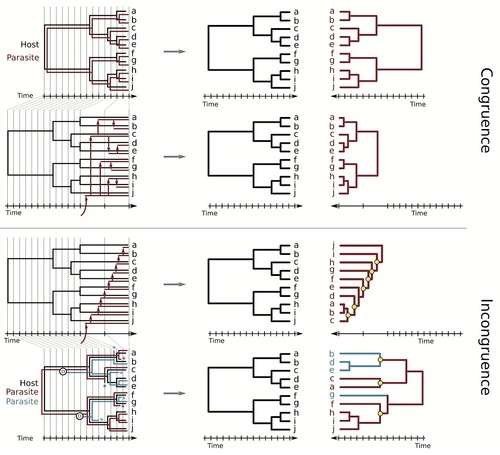New Phytologist: Cospeciation vs host-shift speciation: methods for testing, evidence from natural associations and relation to coevolution (2013)
See on Scoop.it – Virology and Bioinformatics from Virology.ca
Hosts and their symbionts are involved in intimate physiological and ecological interactions. The impact of these interactions on the evolution of each partner depends on the time-scale considered. Short-term dynamics – ‘coevolution’ in the narrow sense – has been reviewed elsewhere. We focus here on the long-term evolutionary dynamics of cospeciation and speciation following host shifts. Whether hosts and their symbionts speciate in parallel, by cospeciation, or through host shifts, is a key issue in host–symbiont evolution. In this review, we first outline approaches to compare divergence between pairwise associated groups of species, their advantages and pitfalls. We then consider recent insights into the long-term evolution of host–parasite and host–mutualist associations by critically reviewing the literature. We show that convincing cases of cospeciation are rare (7%) and that cophylogenetic methods overestimate the occurrence of such events. Finally, we examine the relationships between short-term coevolutionary dynamics and long-term patterns of diversification in host–symbiont associations. We review theoretical and experimental studies showing that short-term dynamics can foster parasite specialization, but that these events can occur following host shifts and do not necessarily involve cospeciation. Overall, there is now substantial evidence to suggest that coevolutionary dynamics of hosts and parasites do not favor long-term cospeciation.
See on onlinelibrary.wiley.com
